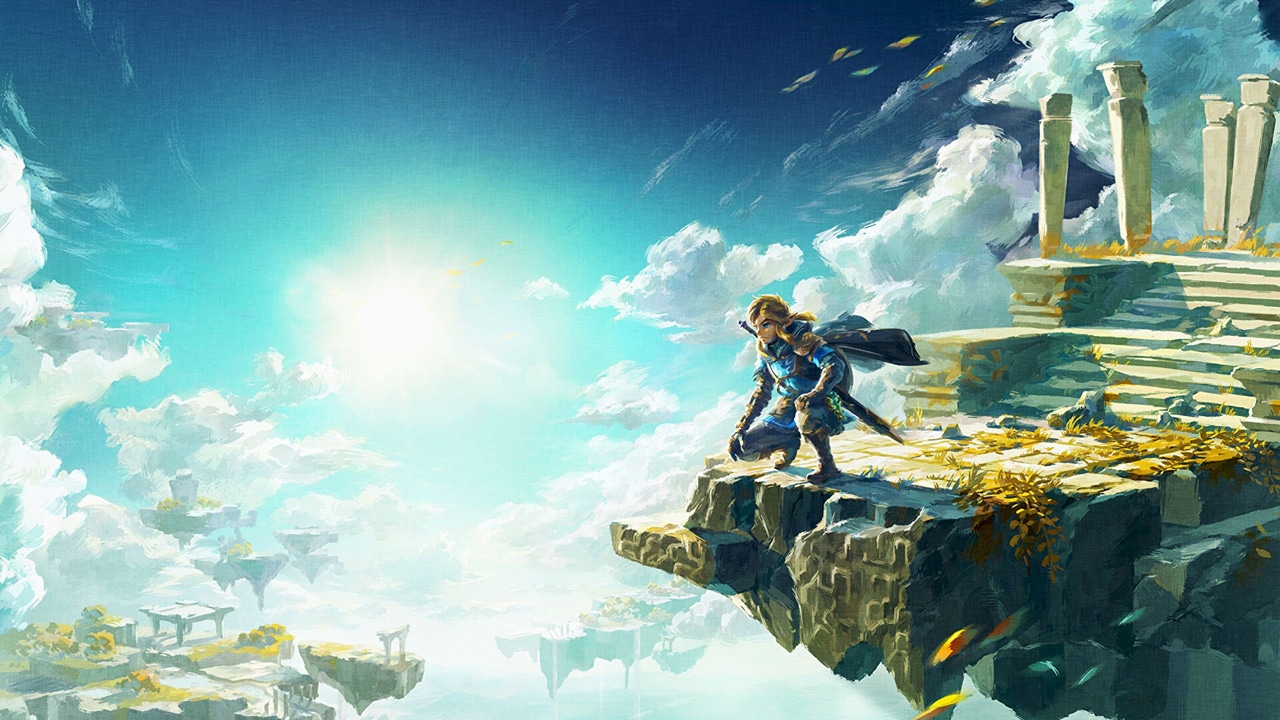Zelda devs originally made sky islands look like "specks of trash"
Legend of Zelda: Tears of the Kingdom carries over scrapped ideas from its direct predecessor, and implementing them required a change on multiple fronts from Nintendo.

The Legend of Zelda: Tears of the Kingdom boasts many new mechanics, but its biggest may be its expansive new version of the kingdom of Hyrule. Beyond the plains and biomes of 2017's Legend of Zelda: Breath of the Wild, Link can explore the skies above.
Ahead of the game's May 12 release, Nintendo published a multi-part roundtable about the game's development process, and much of the focus was on its transitions from land to sky. As technical director Takuhiro Dota explained it, this was one of several ideas carried over from Breath of the Wild.
According to Dohta, there were "a lot of ideas we wanted to implement" in Breath. But the team "made clear decisions on what we wouldn’t do in that game. [...] For Tears, we began by compiling and implementing ideas we couldn't include in the previous title."
Tears of the Kingdom lets players seamlessly transition from ground to sky to back again. Because Breath was seamless with its transitions, Dohta added that it was important for the sequel to have parity. Everything in the game looks "as it should," but that wasn't always the case during development.
Starting out, it was the designers who had to tell the team that the sky islands were "too small" from ground level and looked like "loose specks of trash." Director Hidemaro Fujibayashi laughed, and credited those designers for saying they'd "made the skies messy by adding too many islands."
Tears of the Kingdom's verticality truly changed everything
Continuing the sky island talk, Fujibayashi discussed how they were created. Because those islands and the path to getting there were "novelties" to the team, they had to add an island at a time, which also helped them test Tears' various gameplay elements.
Expanding the world to include the sky turned Hyrule into a "three-dimensional world," he said. To him, it marks a difference to the two-dimensional world in Breath, which only offered verticality by way of climbing walls.
Tears also features cliffside entrances for players to enter, a marked departure from the bare cliffsides of Breath of the Wild. Because of the changes to the environment, art director Satoru Takizawa admitted it changed how the team viewed Hyrule during development.
"When a place–even one that's already familiar–is augmented with something of worth, you begin to see the world in a different light," said Takizawa. "I believe the way players explore Hyrule will change too."
Sound director Hajime Wakai continued by saying the game's seamless transitions changed its sound design. Though the transitions are seamless like everything else, background music had to shift according to the situation, so the sound team created triggers indicating where music would switch.
It was also difficult to find a "fitting sound for the sky. I knew what 'flying in the sky' sounded like, but the request was for an 'island in the sky.'"
You can read the currently released parts of Tears of the Kingdom's developer roundtable right here.
About the Author(s)
You May Also Like







.jpeg?width=700&auto=webp&quality=80&disable=upscale)








